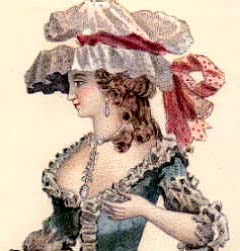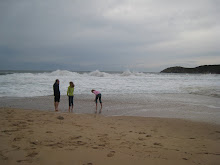 My sixth or seventh check of the New York Times website today reveals that Obama is still ahead by a (someone less superstitious might say comfortable, but let's settle for:) slight margin. Our votes are somewhere over the Atlantic right now, on their way home to be counted. A is carrying them in her luggage. She came across last week with a suitcase full of American election bits and bobs--stickers and buttons and signs--and she's going back with our votes. I imagine the candidates wish it could always be so simple.
My sixth or seventh check of the New York Times website today reveals that Obama is still ahead by a (someone less superstitious might say comfortable, but let's settle for:) slight margin. Our votes are somewhere over the Atlantic right now, on their way home to be counted. A is carrying them in her luggage. She came across last week with a suitcase full of American election bits and bobs--stickers and buttons and signs--and she's going back with our votes. I imagine the candidates wish it could always be so simple.I know he's way ahead, but I've lived through the last two presidential elections. There's a very large part of me that expects to wake up one of the next six mornings and read about something catastrophic and horrible and election-changing. We may or may not find out in a timely fashion, though, because tomorrow we're taking the boat to Corsica. It's the Toussaint holiday and the girls have almost two weeks off. Tomorrow evening we'll drive to Toulon and put the car and ourselves on a boat, and Thursday morning we'll wake up and see Ajaccio out the porthole. At least, I hope there's a porthole in our cabin.
We'll be back next Tuesday. As the first ballots are cast in New Hampshire, we'll be driving to Bastia to board the early morning ferry. We'll dock at Savone early in the afternoon, as the candidates go to vote themselves and the masses of volunteers line up 50 feet away from the polling stations. We'll wend our way along the Mediterranean coast--C wants to stop for lunch in Ventimiglia to break up the trip--and, late in the afternoon, we'll open the gates of La Bastiole. If I manage to get to Picard tomorrow, we'll thaw supper in the oven; otherwise, it'll be pizza from Madame Marie.
Four years ago, C and I spent election day standing outside a polling station in my hometown. We started out the regulation 50 feet away from the doors, but when the temperature dropped and it started to rain, the authorities, whoever they were, took pity on the volunteers and let us stand under an open breezeway only 20 feet or so from the door. The precinct went 75% the other way, and although the voters were polite to me--the protection of Southern womanhood--C had a difficult day. And it didn't get any better when we watched the returns that night.
So we're hoping for a better day next Tuesday, both personally and globally. Between now and then we--okay, really, I, the family is just humoring me--are looking forward to seeing Napoleon's birthplace and death mask. (Who can resist a death mask? Not I.) We're hoping to hike some (although the forecast is for rain) and to walk on the beach (again, the forecast). Other than that, we're looking forward to scenery, villages, new kinds of cheeses, Corsican wine, and (we're all really hoping for) lots of troupeaux of sheep and goats wandering the roads. (A year plus in rural France, and we still can't get enough of farm animals and shepherds.) None of our hotels boasts internet access and I doubt that the International Herald Tribune gets delivered to the Corsican back country, so whatever happens is going to have to happen without us.
Which, of course, it would do anyway. But we're going to be turning it loose now. So, folks, go vote. Light a candle, wear your pajamas inside out, switch your ring to the other hand, do whatever you think will help. Stand outside in the rain and pass out stickers and smile, even if you think they won't vote for your guy. Because this time around, I think--I hope--I almost believe--that they will.
And we'll be back next week.













































